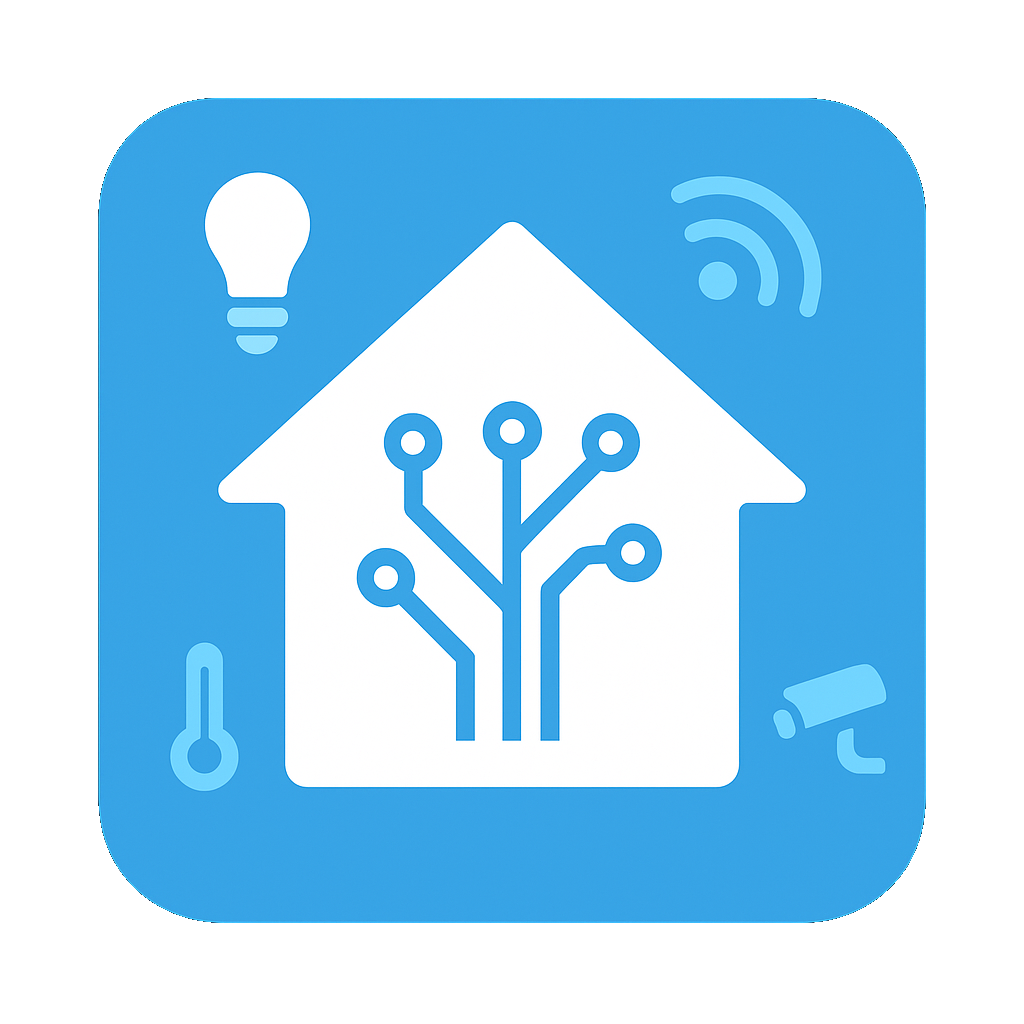Welcome to Smart Home Europe! In this guide, we’ll walk you through installing and configuring the Home Assistant mobile app — your pocket-sized smart home control center.
By the end of this guide:
- ✅ You’ll have the app installed and connected to your Home Assistant.
- 📡 You’ll be able to use it on your local Wi-Fi.
- 🌍 Optionally, you’ll set up secure remote access using DuckDNS and HTTPS.
- 🔄 Bonus: We’ll explain how to make multiple services (like Frigate) securely available over the internet.
📱 Step 1: Install the App
The Home Assistant app is free and available for both iOS and Android:
- iOS: Download from App Store
- Android: Download from Google Play
🌐 Step 2: Check Local Access
Before opening the app, make sure Home Assistant is working on your network.
Try opening this in a browser on your phone:
arduinoKopiërenBewerkenhttp://homeassistant.local:8123
If that doesn’t work, try:
cppKopiërenBewerkenhttp://YOUR_LOCAL_IP:8123
(Replace YOUR_LOCAL_IP with your Home Assistant’s IP address, e.g., 192.168.1.42.)
🔗 Step 3: Connect the App
- Open the Home Assistant app.
- It should detect your Home Assistant. If not, enter the local address manually.
- Log in with your Home Assistant username and password.
- Give your device a name (like “Alice’s iPhone”).
- Accept any permissions (location, notifications, etc.).
You’re now connected on your home network!
🌍 Step 4 (Optional): Set Up Remote Access with DuckDNS
Want to control your smart home from outside your home Wi-Fi? Follow these steps:
🐤 1. Register with DuckDNS
- Go to https://www.duckdns.org
- Log in with Google, GitHub, etc.
- Pick a domain (like
smarthomeeurope) and click Add Domain. - Copy your DuckDNS token — you’ll need it soon.
⚙️ 2. Install the DuckDNS Add-on in Home Assistant
- Go to Settings → Add-ons → Add-on Store
- Search for DuckDNS and install it.
- Open the DuckDNS add-on and paste in this configuration:
yamlKopiërenBewerkenlets_encrypt:
accept_terms: true
certfile: fullchain.pem
keyfile: privkey.pem
token: YOUR_DUCKDNS_TOKEN
domains:
- yourname.duckdns.org
aliases: []
seconds: 300
Replace:
yournamewith your chosen DuckDNS nameYOUR_DUCKDNS_TOKENwith your token
- Save and Start the add-on.
- Enable Start on boot and Watchdog.
This keeps your IP updated and handles your HTTPS certificate automatically.
🔁 3. Forward Ports on Your Router
To allow secure traffic into your home network:
- Log into your router.
- Find the Port Forwarding section.
- Add this rule:
| Setting | Value |
|---|---|
| External Port | 443 |
| Internal IP | IP of your Home Assistant |
| Internal Port | 8123 |
| Protocol | TCP |
Save and reboot if needed.
🧪 4. Test Your HTTPS Access
In your browser, go to:
arduinoKopiërenBewerkenhttps://yourname.duckdns.org
You should see your Home Assistant login screen with a secure padlock 🔒.
📲 5. Update the App with External URL
In the app:
- Go to App Configuration → Connection
- Set:
- Internal URL:
http://YOUR_LOCAL_IP:8123 - External URL:
https://yourname.duckdns.org
- Internal URL:
Done! The app will switch automatically based on where you are.
🧩 BONUS: Multiple HTTPS Services? Use NGINX as a Reverse Proxy
If you want to access more than just Home Assistant (like Frigate or Node-RED) over HTTPS, DuckDNS alone isn’t enough. You’ll need a reverse proxy to manage multiple services securely. Home Assistant makes this easy with NGINX.
🔄 Option 1: NGINX Home Assistant SSL Proxy (Simple)
- Go to Add-on Store
- Search for: NGINX Home Assistant SSL Proxy
- Install and configure it like this:
yamlKopiërenBewerkendomain: yourname.duckdns.org
certfile: fullchain.pem
keyfile: privkey.pem
hsts: false
- Start the add-on. Disable the DuckDNS add-on if it’s running — you only need one to handle HTTPS.
- Make sure your router forwards:
- Port 443 → NGINX container
- Internal port = 443
Now NGINX will forward HTTPS traffic directly to Home Assistant.
This only works for Home Assistant. If you want multiple services, use the next option.
🧠 Option 2: NGINX Proxy Manager (Recommended for Multiple Services)
- In Add-on Store, enable Advanced Mode (top right under your profile).
- Search for: NGINX Proxy Manager (by “Home Assistant Community Add-ons”).
- Install and start it.
- Open the web UI (usually on port
81). - Set up:
- Proxy Hosts for each service (e.g.,
frigate.yourname.duckdns.org) - Enable SSL with Let’s Encrypt (handled automatically!)
- Proxy Hosts for each service (e.g.,
This gives you an easy web interface to manage:
- Home Assistant at
https://home.yourname.duckdns.org - Frigate at
https://frigate.yourname.duckdns.org - Node-RED at
https://nodered.yourname.duckdns.org - And more…
🎉 You Did It!
You’ve installed the Home Assistant mobile app, connected it to your local and remote network, and (optionally) set up secure access for multiple smart home services.
Got stuck somewhere? Drop us a message or visit our upcoming Smart Home Europe Help Center.
